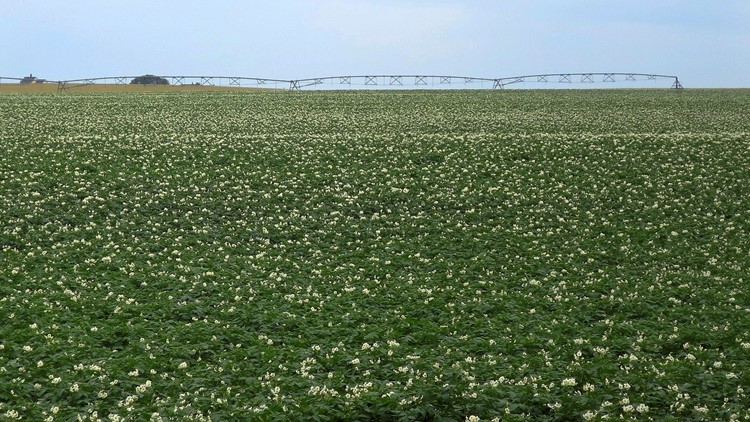AUGUSTA, Maine — U.S. Department of Agriculture (USDA) Secretary of Agriculture Sonny Perdue recently designated Aroostook County as a drought disaster area, making farm operators in Aroostook and its four contiguous counties, Penobscot, Piscataquis, Somerset, and Washington, eligible for emergency assistance from the Farm Service Agency (FSA).
The Maine Department of Agriculture, Conservation & Forestry (DACF) is encouraging Maine farmers to contact their local USDA Farm Service Center for drought assistance.
Farmers in eligible counties have eight months from the date of a Secretarial disaster declaration to apply for emergency loans.
FSA considers each emergency loan application on its own benefits, considering the extent of production losses on the farm and the operator's security and repayment ability. The drought disaster declaration may be expanded to other counties if drought conditions continue.
A Secretarial Disaster Designation is triggered for severe drought through a fast track process when a county meets the D2 (Severe Drought) drought level for eight consecutive weeks or a higher drought intensity value for any length. Secretarial Disaster Designations immediately trigger the availability of low-interest FSA Emergency (EM) loans to eligible producers in all primary and contiguous counties.
EM loan funds may be used to:
- Restore or replace essential property;
- Pay all or part of production costs associated with the disaster year;
- Pay essential family living expenses;
- Reorganize the farming operation; and
- Refinance certain debts.
DACF also encourages farmers to plan for future drought conditions by upgrading their water supplies and improving their soils. The USDA Natural Resources Conservation Service (NRCS) provides technical assistance for agricultural water management plans, farm ponds, and irrigation systems. Soil health practices such as composting, cover crops, and reduced tillage can improve soil moisture-holding capacity.
Farmers should contact their local Soil & Water Conservation District or local NRCS Service Center for assistance and recommendations on soil health practices.



